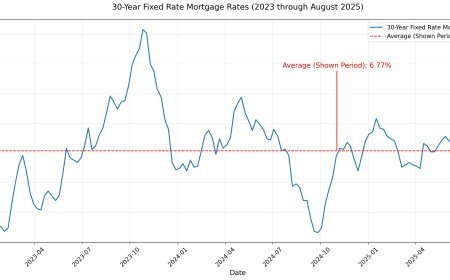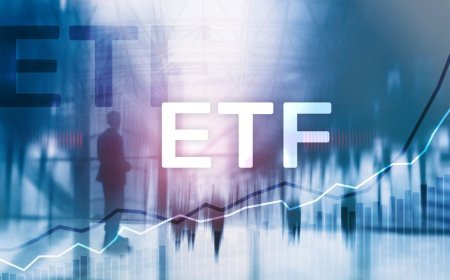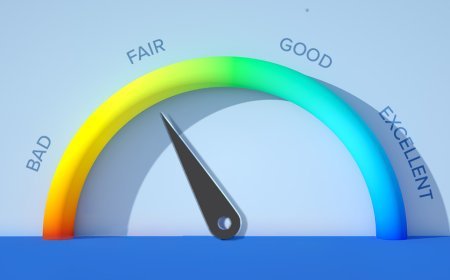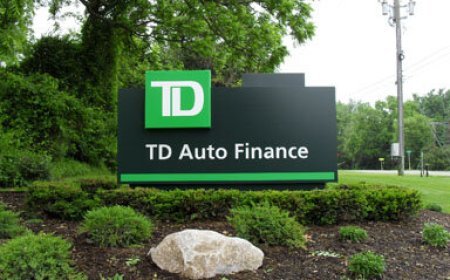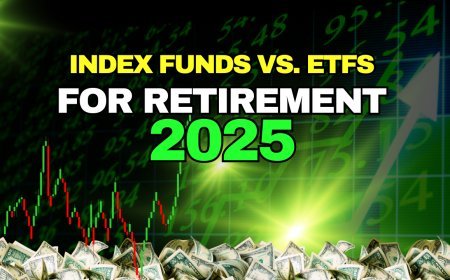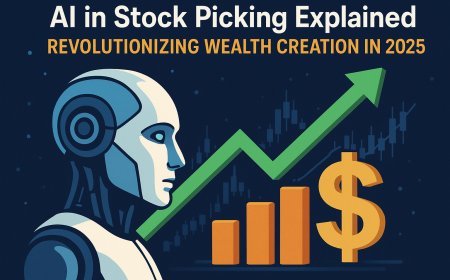Why ETFs Are Outpacing Index Funds in 2025: Top Trends Explained
This article dives into the reasons behind the rising popularity of ETFs over index funds in 2025, highlighting key trends shaping investor preferences. It explores factors like cost, flexibility, and market innovations, offering insights for investors looking to capitalize on these developments in their portfolios.

Exchange-traded funds (ETFs) have surged in popularity, increasingly outpacing index funds as a go-to investment for both new and seasoned investors in 2025. While both options offer low-cost, diversified exposure to markets, ETFs are gaining traction due to their flexibility, affordability, and alignment with modern investing trends. This article explores the key reasons ETFs are taking the lead and what these trends mean for investors building portfolios in 2025.
What Are ETFs and Index Funds?
ETFs (Exchange-Traded Funds) track market indices, like the S&P 500 or bond markets, but trade like stocks on an exchange, allowing investors to buy and sell shares throughout the day at market prices. They offer diversification and low costs, with the added perk of flexibility.
Index Funds are mutual funds that also track indices, pooling investor money to replicate a market’s performance. They are purchased at the end of the trading day at the net asset value (NAV) and are known for their simplicity and low fees.
While both are staples for cost-conscious investors, ETFs are pulling ahead in 2025 due to evolving market dynamics and investor preferences.
Why ETFs Are Gaining Popularity in 2025
1. Lower Costs and Accessibility
ETFs often have expense ratios as low as or lower than index funds—sometimes as little as 0.03% (e.g., Vanguard’s VTI or Schwab’s SCHB). In 2025, commission-free trading platforms like Robinhood, Fidelity, and Charles Schwab have made ETF investing nearly costless, eliminating brokerage fees that once deterred investors. Additionally, ETFs require only the price of a single share (often $10–$100), compared to index funds’ minimum investments of $500–$3,000, making them more accessible for investors with limited capital.
Trend Impact: Younger investors and those with smaller portfolios are flocking to ETFs, as they can start investing with minimal funds and avoid high entry barriers.
2. Flexibility in Trading
Unlike index funds, which settle at the day’s NAV, ETFs allow intraday trading, enabling investors to react to market movements in real time. In 2025’s volatile market, driven by shifting interest rates and global uncertainties, this flexibility is a major draw for investors who want to adjust positions quickly or capitalize on short-term opportunities.
Trend Impact: Active investors and those in self-directed accounts (e.g., IRAs) prefer ETFs for their ability to pivot without waiting for end-of-day pricing.
3. Diverse and Niche Offerings
ETFs have expanded beyond broad-market indices to include specialized sectors, themes, and asset classes. In 2025, ETFs focusing on emerging trends—like artificial intelligence (e.g., ARKK), clean energy (ICLN), or inflation-protected bonds (TIP)—are gaining traction. Index funds, while reliable for broad exposure, often lack this variety, limiting options for investors seeking targeted strategies.
Trend Impact: Investors are drawn to ETFs for their ability to diversify into niche markets, aligning portfolios with specific economic or technological trends.
4. Tax Efficiency
ETFs are inherently more tax-efficient due to their in-kind redemption process, which minimizes capital gains distributions compared to index funds. In 2025, with potential tax policy changes looming, investors in taxable accounts are increasingly favoring ETFs to reduce tax liabilities, especially for high-net-worth individuals or those in higher tax brackets.
Trend Impact: ETFs are becoming the preferred choice for taxable accounts, though this advantage is less relevant in tax-advantaged accounts like IRAs.
5. Technological Advancements and Investor Education
The rise of robo-advisors and investing apps in 2025 has boosted ETF adoption. Platforms like Betterment and Wealthfront heavily feature ETFs in their automated portfolios due to their liquidity and low costs. Additionally, increased financial literacy through social media (e.g., X posts) and educational content has made ETFs more approachable, as investors learn to leverage their flexibility and variety.
Trend Impact: Technology and education are demystifying ETFs, attracting a broader audience, from millennials to retirees, who value ease and choice.
Considerations for Investors in 2025
-
Portfolio Goals: ETFs are ideal for investors seeking flexibility or niche exposure, but index funds may still suit those prioritizing simplicity and automatic investing for long-term goals like retirement.
-
Costs: Compare expense ratios carefully. For example, Vanguard’s VOO (ETF, 0.03%) is slightly cheaper than its index fund counterpart, VFIAX (0.04%). Small savings compound over time.
-
Market Conditions: In 2025, volatility may favor ETFs for tactical adjustments, but broad-market index funds remain a safe bet for steady growth.
-
Platform: Ensure your brokerage offers commission-free ETF trading to maximize cost savings.
-
Risk of Overtrading: ETFs’ intraday trading can tempt investors into frequent trades, which may disrupt long-term strategies. Stick to a disciplined plan.
Why ETFs Are Winning in 2025
ETFs are outpacing index funds due to their lower entry costs, trading flexibility, diverse offerings, and tax efficiency, aligning perfectly with 2025’s dynamic investing landscape. They cater to a new generation of investors who value control, affordability, and access to innovative markets. However, index funds remain a strong choice for hands-off investors focused on simplicity and automation, especially in retirement accounts.
A smart strategy might combine both: use ETFs for targeted exposure to trends like clean energy or technology, while anchoring your portfolio with broad-market index funds for stability. In 2025, ETFs’ versatility makes them a standout, but the best choice depends on your goals, budget, and investing style.
Conclusion
ETFs are surging ahead of index funds in 2025, driven by their affordability, flexibility, and alignment with modern investing trends. From lower costs to niche market exposure, they offer unique advantages for investors navigating a fast-changing financial landscape. Evaluate your goals, compare fees, and consider blending ETFs with index funds to build a diversified, cost-effective portfolio. Stay informed and invest strategically to capitalize on these trends.
For a broader comparison of these investment vehicles, check out our guide: Index Funds vs. ETFs in 2025: Best Choice for Beginner Investors.
What's Your Reaction?
 Like
0
Like
0
 Dislike
0
Dislike
0
 Love
0
Love
0
 Funny
0
Funny
0
 Angry
0
Angry
0
 Sad
0
Sad
0
 Wow
0
Wow
0







